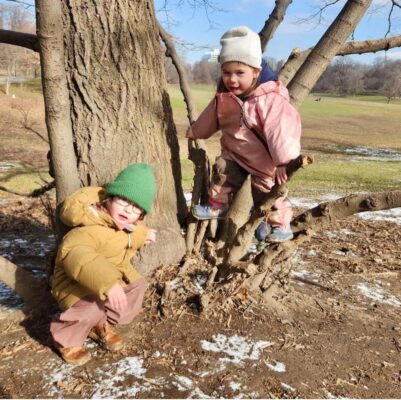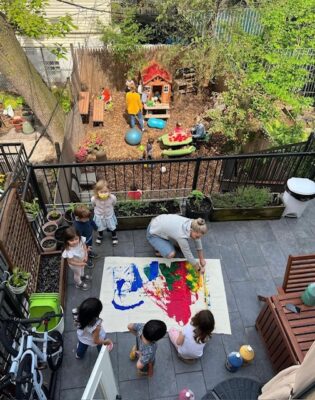Since its inception, the KinderHaus children attenting the Pre-Kindergarten programs have consistently exceeded the New York State Department of Education standards. KinderHaus provides an intimate, progressive and multicultural education that is ideally preparing be part of an international future. At KinderHaus, small classes, language immersion, and an emergent curriculum help create students who are thoughtful, collaborative problem solvers. We use a variety of methods that combine elements of educator-guided and child-directed activity. Using interrelated thematic teaching and small, collaborative group work, each day is specifically designed to achieve these goals. Number and letter sense is achieved through both curricular and daily play and learning experiences. Pre-K students benefit from a curriculum of diverse content and depth, related to themes that integrate multiple disciplines into each area of study.
The Pre-K program integrates: Math, Science, Language, Early Literacy, Creative Arts, Social Studies, Physical Movement, and Social-Emotional Development.
Subjects and Key Curriculum Highlights
Children are encouraged to express their ideas verbally and in writing. Age-appropriate activities to foster phonological awareness ensures readiness for a successful reading and writing aquisition. The daily circle time focuses on developing German literacy skills through group discussion, where children are actively involved in building their own vocabulary, building their phonemic and phonological awareness of the alphabet, playing word games to practice pronunciation and to recognize the initial sounds of words.
In addition, KinderHaus teachers are dedicated to use rich, descriptive language throughout the day as a means to introduce and expand the vocabulary of their students. No matter if your child should continue with their schooling in Germany or in an English-speaking school, they will find it easier to learn the written language due to the high level of language awareness and an understanding of synthesizing letters and word formation developed during their time at KinderHaus.
Math and Science
Children learn mathematical and scientific concepts with real life objects (e.g. fall leaves) during hands-on activities in a meaningful and theme-related context. By working with several materials such as sticks, cubes, beans, noodles, etc. children build their math skills such as counting and cardinality, sorting and measuring, less than and equal to concepts, and number-amount-relation.
and theme-related context. By working with several materials such as sticks, cubes, beans, noodles, etc. children build their math skills such as counting and cardinality, sorting and measuring, less than and equal to concepts, and number-amount-relation.
While research has shown that being bilingual provides an individual with greater problem-solving abilities, a wider range of flexibility in critical thinking as well as an increased level of empathy, bilingual children also grow up seeing the world from two different linguistic and cultural angles, which enables them to develop an open-minded and confident personality with the opportunity to participate in the global community in many ways. This is the understanding that drives the Pre-K Social Studies and Scientific curriculum.
Social Studies
The Social Studies curriculum focuses on developing critical thinking and problem solving skills and building a rich vocabulary for speaking and listening during class discussions. Inquiry-based exploration will take students around the world as well as provide them with with the tools to better understand the world around us. KinderHaus teachers use outdoor activities to provide a platform for their student’s natural curiosity to be used for rich learning opportunities. Each unit is taught with an interdisciplinary approach, meaning that a science lesson will draw support from geography, art, or even music – creating a detailed approach to learning that grounds knowledge in experience and context.
Creative Arts: Art, Music and Movement
 During the KinderHaus Arts curriculum, students are encouraged to participate in a variety of art and music activities, including crafting, painting, listening, singing and physical movement. Singing traditional German songs, adding words to songs, making suggestions for music activities, identifying simple melodies, creating body movement (dancing, balancing, yoga, experiencing rhythm in different ways).
During the KinderHaus Arts curriculum, students are encouraged to participate in a variety of art and music activities, including crafting, painting, listening, singing and physical movement. Singing traditional German songs, adding words to songs, making suggestions for music activities, identifying simple melodies, creating body movement (dancing, balancing, yoga, experiencing rhythm in different ways).
Being creative with different materials, instruments and their own body is an important aspect of our approach and different activities are designed to engage and challenge children to develop personal creativity and an appreciation for the arts. During art activities the children learn to value their own creations and recognize the different outcomes, shapes and forms. Building tangible objects out of their imagination is a wonderful way to explore the endless opportunities and develop an understanding that their own actions can have an effect and/or use.
